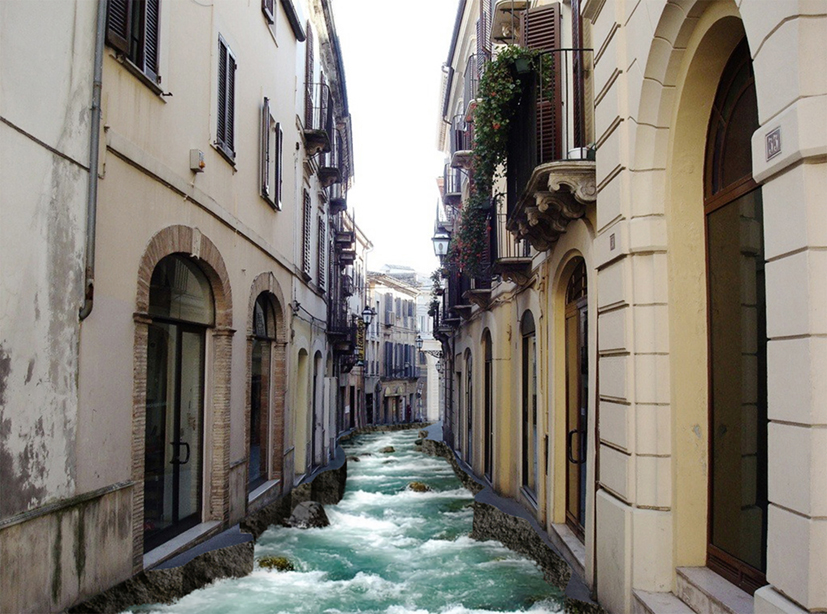
From anamorphosis to vision: “3D Sidewalk Chalk Art”
Abstract
Two languages, apparently inconsistent, such as “real” and “virtual” can be manipulated to strongly influence human perception of seeing. Representation science finds in the phenomenon of contemporary street art an interesting field of research. Street art, which binds and unites these languages, is a geometric art that influences perception. Even if it presents very different styles held together only by the main support material (the wall or the floor) and the technical means used (spray can, adhesive tape, etc.), it can be defined as a pop art when it represents unusual subjects, a rational art when it uses geometry and an irrational art when it distorts, exploiting the techniques of planar anamorphosis. Anamorphosis represents an interesting field of investigation that includes numerous theoretical studies in both geometric and graphic terms. Some currents of street art, in fact, base their essence on the effect of perception through the anamorphosis techniques or the strong manipulation of geometry. This paper presents a detailed study of 3D Sidewalk Chalk Art, a very specific current of Street Art, which leads the viewer to a different way of looking at the artwork, according to a new perspective. The paper retraces the stages of the success of this current of street art from its origins to its maximum diffusion in the 1980s - when anamorphic representations began to be used - providing a description of the methods, techniques and materials used for their construction.
Keywords
Full Text:
PDFRefbacks
- There are currently no refbacks.
Copyright (c) 2020 Cristiana Bartolomei, Alfonso Ippolito, Cecilia Mazzoli, Caterina Morganti
DISEGNARECON
ISSN 1828 5961
Registration at L'Aquila Law Court no 3/15 on 29th June, 2015.
Indexed in SCOPUS. Diamond Open Access. All papers are subjected to double blind peer review process by qualified reviewers.
Journal founded by Roberto Mingucci
